Cosmic Photos: Zwicky Transient Facility First Light
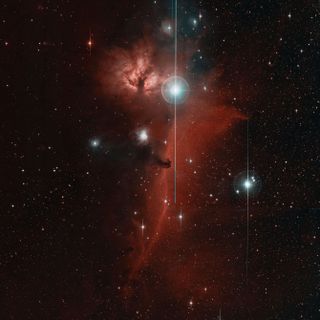
ZTF First Light 2
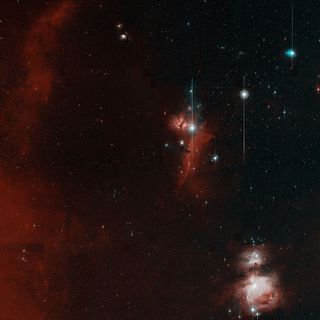
ZTF took this "first-light" image on Nov.1, 2017, after being installed at the 48-inch Samuel Oschin Telescope at Palomar Observatory. The full-resolution version is more than 24,000 pixels by 24,000 pixels. Each ZTF image covers a sky area equal to 247 full moons. The Orion nebula is at lower right.
ZTF First Light Gallery
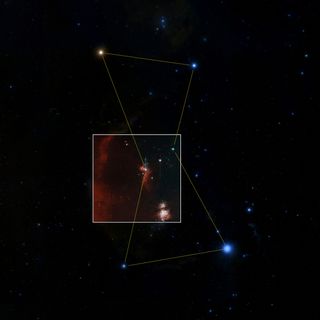
This image shows the section of the sky featured in the ZTF "first light" image, in the context of the constellation Orion.
ZTF First Light Installation
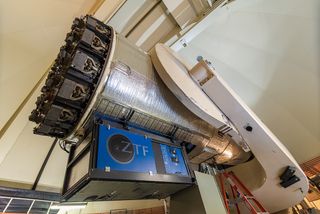
The Zwicky Transient Facility (ZTF) instrument being installed on the 48-inch Samuel Oschin Telescopeat Palomar Observatory. The large-format CCD camera at the heart of ZTF is located inside the telescope tube, at the focus of the primary mirror.
ZTF Installation
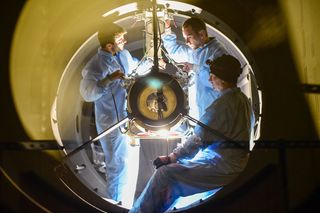
Zwicky Transient Facility (ZTF) team members install the 605-mega pixel, wide-field camera at the prime focus of the 48-inch Samuel Oschin Telescope at Palomar Observatory.
ZTF Installation
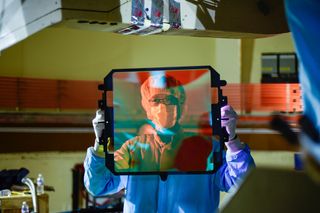
Technical lead Roger Smith, of Caltech Optical Observatories, inspects one of the three wide-field optical filters used for the Zwicky Transient Facility (ZTF) science survey.
ZTF Camera
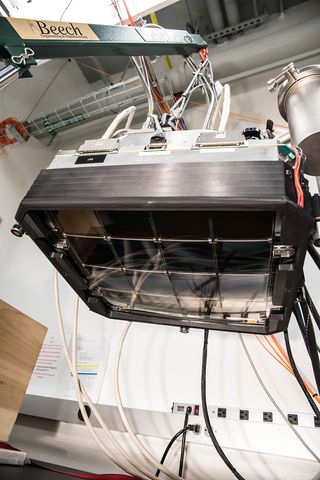
The Zwicky Transient Facility (ZTF) camera at a laboratory at Caltech.
Fritz Zwicky
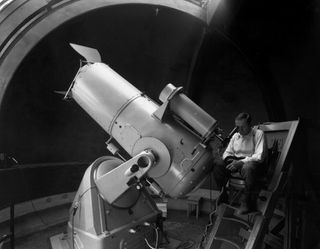
Fritz Zwicky at the 18-inch Schmidt telescope at Palomar Observatory in the 1930s. Zwicky did extensive work looking for variable objects, and identified over 100 supernovas in his lifetime.
Get the Space.com Newsletter
Breaking space news, the latest updates on rocket launches, skywatching events and more!
Join our Space Forums to keep talking space on the latest missions, night sky and more! And if you have a news tip, correction or comment, let us know at: community@space.com.

Calla Cofield joined Space.com's crew in October 2014. She enjoys writing about black holes, exploding stars, ripples in space-time, science in comic books, and all the mysteries of the cosmos. Prior to joining Space.com Calla worked as a freelance writer, with her work appearing in APS News, Symmetry magazine, Scientific American, Nature News, Physics World, and others. From 2010 to 2014 she was a producer for The Physics Central Podcast. Previously, Calla worked at the American Museum of Natural History in New York City (hands down the best office building ever) and SLAC National Accelerator Laboratory in California. Calla studied physics at the University of Massachusetts, Amherst and is originally from Sandy, Utah. In 2018, Calla left Space.com to join NASA's Jet Propulsion Laboratory media team where she oversees astronomy, physics, exoplanets and the Cold Atom Lab mission. She has been underground at three of the largest particle accelerators in the world and would really like to know what the heck dark matter is. Contact Calla via: E-Mail – Twitter
